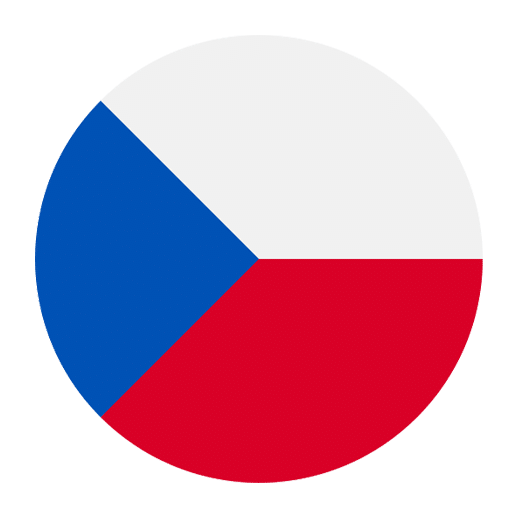Learning a new language can be a fascinating journey filled with the discovery of new words, cultural nuances, and interesting linguistic structures. For those venturing into the Czech language, two words that often cause confusion are “zámek” and “znak.” While these words might appear similar to the untrained eye, they have distinct meanings and uses. In this article, we will delve into the differences between zámek and znak, exploring their definitions, usage in sentences, and the cultural contexts in which they are found.
Understanding Zámek
The word zámek in Czech has two primary meanings: “castle” and “lock.” The context in which the word is used will determine its meaning.
Zámek as Castle
When referring to a “castle,” zámek conjures images of grand historical buildings, often associated with royalty or nobility. Castles are significant in Czech history, with numerous well-preserved examples scattered across the country. These structures serve as a testament to the architectural and cultural heritage of the Czech Republic.
For example:
– “Karlštejn je slavný zámek nedaleko Prahy.” (Karlštejn is a famous castle near Prague.)
Zámek as Lock
On the other hand, zámek can also mean “lock,” as in the mechanism used to secure doors, gates, or other objects. This meaning is entirely unrelated to the grandiose structures of castles but is equally important in everyday language.
For example:
– “Potřebuji nový zámek na dveře.” (I need a new lock for the door.)
Given these two meanings, it’s crucial to pay attention to context when encountering the word zámek. Whether discussing historical landmarks or household security, understanding the context will guide you to the correct interpretation.
Exploring Znak
The word znak in Czech translates to “sign” or “symbol.” Unlike zámek, znak has a more singular focus but can still be used in various contexts to denote different types of signs or symbols.
Znak as Sign
As a “sign,” znak can refer to a physical marker or indicator, such as road signs, public notices, or any other form of visual communication designed to convey information.
For example:
– “Dopravní znak ukazuje, že se blíží křižovatka.” (The traffic sign indicates that an intersection is approaching.)
Znak as Symbol
In a broader sense, znak can also mean “symbol.” This usage often appears in discussions about literature, art, or cultural studies, where symbols are used to convey deeper meanings or represent abstract concepts.
For example:
– “Lev je znak odvahy.” (The lion is a symbol of courage.)
In both of these cases, znak serves as a means of communication, whether it be a practical indicator or a representation of a larger idea.
Comparing Zámek and Znak
At first glance, zámek and znak might seem similar due to their phonetic resemblance, but their meanings are quite distinct. Understanding these differences is crucial for effective communication in Czech.
Phonetic Similarities and Differences
Phonetically, zámek and znak share the initial “z” sound, which might lead to confusion for language learners. However, the vowel sounds and the ending consonants differentiate them:
– Zámek: /ˈzaːmɛk/
– Znak: /znak/
Paying attention to these subtle phonetic differences can help in distinguishing between the two words during conversations.
Contextual Clarity
As with any language, context is key. The surrounding words and the overall topic of conversation will usually provide clues about which meaning of zámek is intended or if the word znak is being used. For instance, discussing historical landmarks or architecture will likely involve zámek in the sense of “castle,” whereas a conversation about security measures might involve zámek as a “lock.”
Similarly, if the discussion revolves around communication, indicators, or representations, znak will be the appropriate term.
Cultural Significance
Understanding the cultural context of these words can also enrich your learning experience. Castles (zámek) are not just architectural structures; they are deeply embedded in Czech history and culture. Visiting these castles can provide insights into the historical significance of different regions and eras.
Symbols (znak), on the other hand, play a crucial role in literature, art, and everyday communication. Recognizing and understanding these symbols can enhance your appreciation of Czech culture and its nuances.
Practical Tips for Language Learners
Here are some practical tips to help you master the use of zámek and znak in your Czech language journey:
1. Practice with Context
Engage in conversations or writing exercises that specifically focus on using zámek and znak in different contexts. For instance, write a short story involving a castle and a lock, or create sentences using signs and symbols.
2. Use Visual Aids
Visual aids can be incredibly helpful. Look at pictures of Czech castles and learn their names. Similarly, pay attention to road signs, public notices, and other symbols in your environment to reinforce the meaning of znak.
3. Listen and Repeat
Listening to native speakers and repeating after them can improve your pronunciation and help you internalize the subtle differences between similar-sounding words. Watch Czech movies, listen to Czech radio, or engage with Czech speakers to enhance your listening skills.
4. Flashcards
Create flashcards with images of castles and locks for zámek, and various signs and symbols for znak. This visual method can help cement the meanings in your memory.
5. Cultural Immersion
If possible, immerse yourself in Czech culture. Visit the Czech Republic, tour its castles, and observe the local signs and symbols. Cultural immersion provides a practical and memorable way to learn and remember new vocabulary.
Conclusion
Learning the differences between zámek and znak is a small yet significant step in mastering the Czech language. By understanding their meanings, contexts, and cultural significance, you can enhance your language skills and deepen your appreciation for Czech culture. Remember to practice regularly, use visual aids, and immerse yourself in the language as much as possible. Happy learning!

